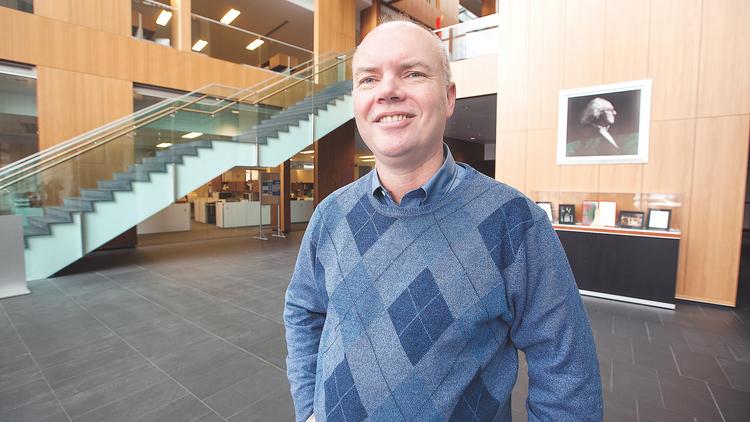Buffalo Building a Biomedical Powerhouse
Observers say there are several reasons why a cluster of ambitious biomedical companies emerged on the Buffalo Niagara Medical Campus.
It partly has to do with investments in local facilities such as the University at Buffalo’s Center for Computational Research, the local center for big data projects.
It also is owed to general technological advances, allowing researchers to turn their science into more specific medical testing and more effective cures.
And it has to do with an evolving economy of entrepreneurship in Buffalo, which is finally turning research hotbeds such as UB, Roswell Park Cancer Institute and Hauptman-Woodward Medical Research Institute into engines of economic growth.
“It’s the computing power along with the science and the confluence of all those facilities that are allowing this to occur,” said Kim Grant, a UB business development executive who works with emerging companies.
Those who are paying attention, such as Grant, recognize an obvious trend in biomedical entrepreneurship in Buffalo. There are more companies being founded, gaining funding and building out real businesses rather than just research projects.
One of the breakouts is Athenex, which was established out of UB in 2002 but more recently raised more than $200 million and is leveraging significant government subsidies to build factories in China and Western New York. Company officials are aggressively pursuing an international strategy to design and manufacture cancer therapies.
But it’s not just about one company. Buffalo now hosts dozens of high-tech companies attacking many sides of the medical industry. Companies that are pursuing cancer therapies which direct chemicals directly to tumors won both the UB Henry A. Panasci Jr. Technology Entrepreneurship Competition (POP Biotechnologies) and the 43North competition (Oncolinx).
They join the list of growing personalized cancer companies that includes Roswell spin-offs OmniSeq, Photolitec and MimiVax; and For-Robin, out of UB.
Meanwhile, a Buffalo Billion program directed multimillion-dollar grants to two companies in 2016, Garwood Medical Devices and Circuit Clinical. Both are located downtown.
Garwood raised $3.6 million in venture capital in 2016 while Circuit Clinical raised more than $1 million.
Then there are the companies tackling medical testing, such as Empire Genomics, AccuTheranostics and Disease Diagnostic Group.
And that’s just an unscientific sampling of the young companies sprinkled throughout facilities on the medical campus or based near UB’s Amherst footprint, some of which were founded here and others that were recruited.
So when Grant goes to trade shows in Boston or New York City, she doesn’t hear snow jokes anymore, she gets genuine interest.
Local experts are starting to make bold comparisons about historical precedents for the Buffalo medical ecosystem. Dr. Steven Schwaitzberg, an entrepreneur who was a professor at Harvard University before he was recruited to become surgery chair at UB’s Jacobs School of Medicine and Biomedical Sciences, recently said Buffalo looks like Boston in the late 1980s just before it became an international biomedical powerhouse.
And Hauptman-Woodward Medical Research Institute CEO Edward Snell said Buffalo is starting to resemble the Stanford area in California, where a long history of top-notch research blossomed dramatically into a worldwide medical and tech hotbed.
“You’re seeing the same thing in Buffalo, a mixture of industry, academia and clinical experts all in the same area,” Snell said. “We’re seeing incremental growth but we’re nowhere near saturation point yet.”
He said the final key is pulling in more private investment. There are a handful of investment groups that actively consider seed funding for medical companies in Buffalo. But these types of companies often require major capital infusions to catalyze their growth.
Snell said he’s optimistic.
“I see a steady increase in venture capital and federal research funding,” he said. “And I think you’re going to see quite a few stories about that in the not-too-distant future.”

